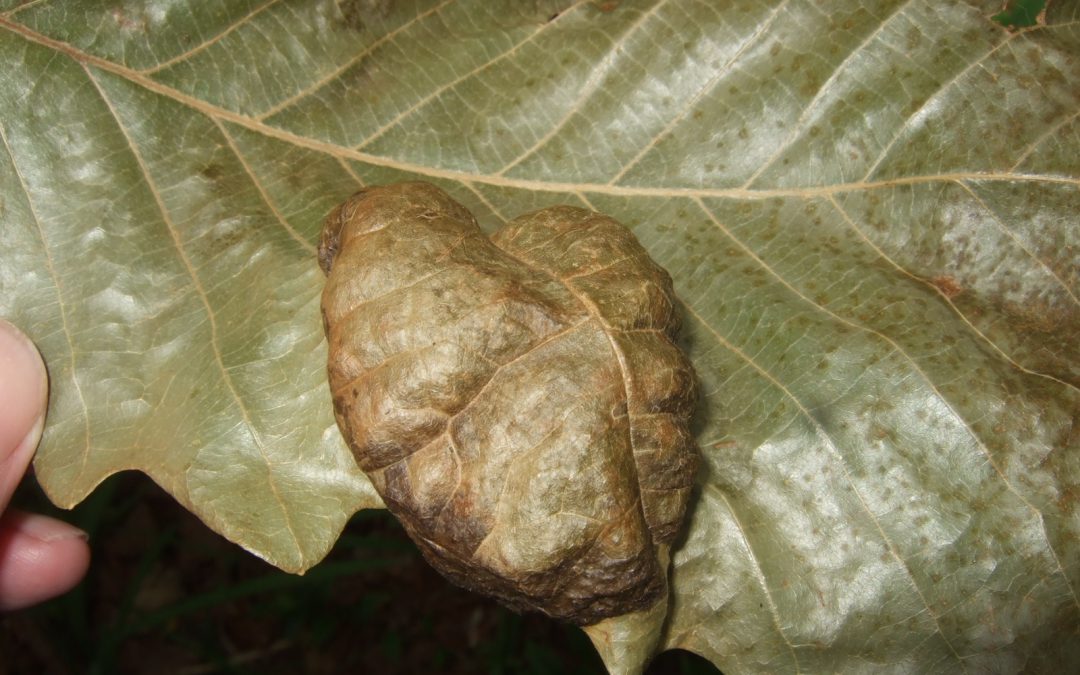
by Mark Tancig | Apr 30, 2020
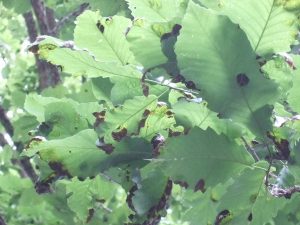
Symptoms of oak leaf blister on swamp chestnut oak. Credit: Gordon Magill.
Even during global pandemics, it’s a joy to be outside during the great north Florida spring we’ve been experiencing lately. As cold fronts come through with their rain bands, some packing a punch, they leave behind the most pleasant mornings, clear blue daytime skies, and crisp evenings. Unfortunately, we’re not the only organism that also enjoys those cool days. Many species of fungi are quite active this type of year as the rains, followed by warmer, yet not too hot temperatures, create the perfect conditions for fungal growth. Some of these fungi grow right on or in the plants we’d like to be enjoying for ourselves, stealing nutrients and causing plant decline or merely causing aesthetic damage. As this is an active time for certain species of fungi, local extension offices are getting more calls and questions regarding lawn and landscape damage due to fungal pathogens. A recent call was a new one for me and an example of a native fungi-plant interaction that looks bad but requires no intervention from us. It also highlights how correctly identifying a disease leads to the best action and can often save time and money and prevent unnecessary pesticides (in this case a fungicide) from entering the environment.
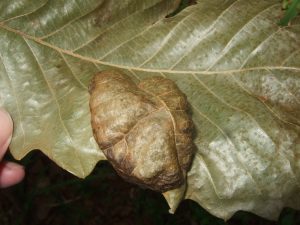
Close up of oak leaf blister on swamp chestnut oak. Credit: Gordon Magill.
The fungi and plant involved here was the oak leaf blister (Taphrina caerulescens) on a swamp chestnut oak (Quercus michauxii). It forms, you guessed it, blisters on the leaves of any of the oaks, though live oak (Quercus virginiana), laurel oak (Quercus laurifolia), and water oak (Quercus nigra) seem to be preferred hosts. The spores of the fungi, dormant since the previous summer/fall and which happen to get lodged in bud scales through wind and rain, germinate in cool, wet weather. The fungus then infects young leaves as they flush and its growth causes a disruption in the leaves’ development. This leads to the blistered look of the leaf tissue and, during extended periods of cool, wet weather, the entire leaf sort of shrivels, browns, and eventually falls off. Spores are eventually released from the fallen leaves to start the process over the next spring.
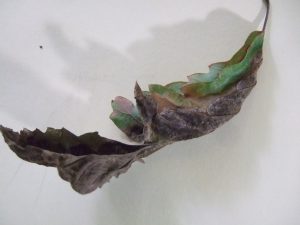
Severe oak leaf blister on swamp chestnut oak. Credit: Gordon Magill.
Though the leaves look pretty terrible, this fungal disease rarely causes plant health issues and the tree recovers just fine. Specimen trees that experience it year to year may be treated with a fungicide, but most homeowners can just let it go. Raking up and disposing of the leaves may help prevent further infections by reducing the number of spores released in the area.
As you enjoy another cool morning after an evening rainstorm, remember that the fungi all around you are also having a great day. You may want to look at your landscape plants and see if there’s anything abnormal going on. If so, take a photo and send it to your local extension office for help with identification and best methods of control, or, like in this case, just leaving it alone.
p.s. As I said this was a new one for me and I want to thank Stan Rosenthal, Extension Agent emeritus, for assisting with identification.
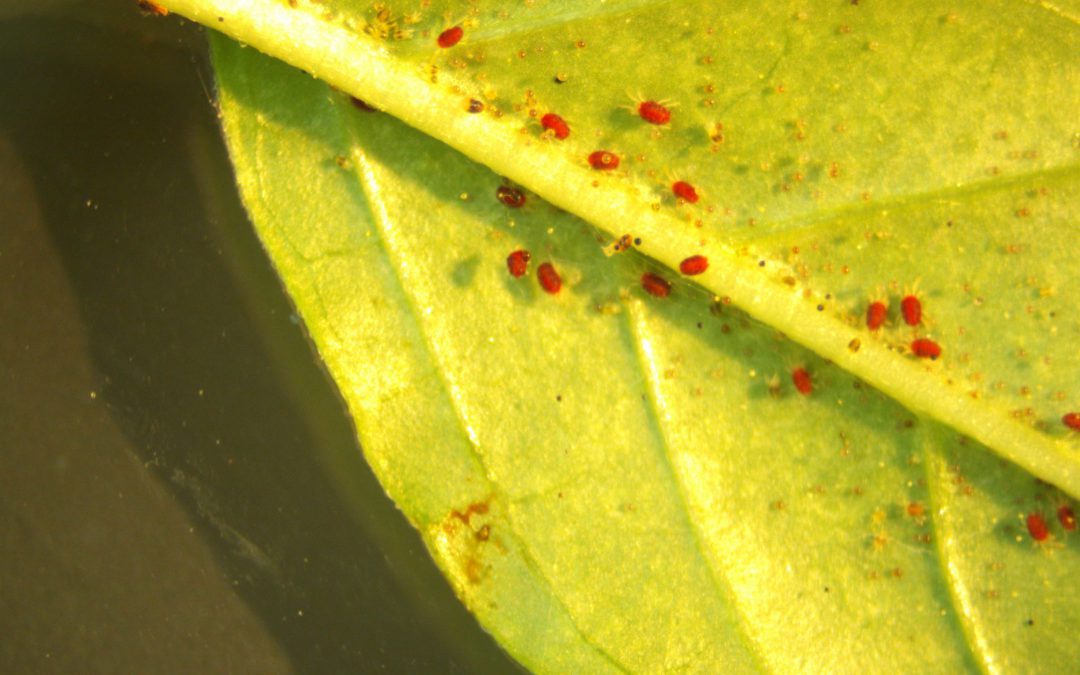
by Mark Tancig | Jan 13, 2020
I was recently asked what kind of fungus was affecting a plant brought into the UF/IFAS Leon County Extension Office. Upon close inspection, it was not a fungus at all, but turned out to be damage from spider mites and the little critters were right there on the plant.
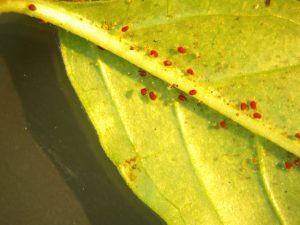
Spider mites along the bottom of the leaf. Credit: Mark Tancig, UF/IFAS.
Spider mites, as the name implies, are eight-legged creatures that are kin to spiders and in the mite and tick group of arachnids. They can cause damage to ornamental, fruit, and vegetable plants, especially in hot, dry weather or when grown in greenhouses or indoors. The plants that came into the office had been growing in a greenhouse.
Spider mites are a piercing, sucking pest that pierce their mouthparts into the leaf tissue to suck out nutritious plant saps. High densities of spider mites can pull enough plant tissues out to cause a light colored, grayish look to the leaves, somewhat resembling downy mildew damage. Upon close inspection, small brown to red dots on the bottom of the leaf and/or spider web-like webbing along the stem and petioles may be observed, confirming the identification of spider mites.
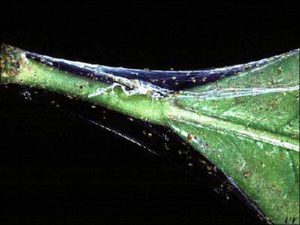
Webbing caused by high numbers of spider mites. Credit: UF/IFAS.
Plants grown outdoors don’t usually experience spider mite damage, as natural predators such as lady beetles, minute pirate bugs, thrips, and lacewings provide biological control. For spider mite infestations on houseplants or in greenhouse operations, control can be achieved through physical and chemical control. As part of an integrated pest management plan, regular monitoring of these plants can help identify problems before they get too bad. Sprays of water and rubbing undersides of leaves can remove many spider mites and provide control of small populations. If that doesn’t take care of them or they are at infestation level, insecticidal soaps and horticultural oils can provide adequate control.
Remember that correct identification is key to properly controlling a pest. If the damage was treated as a fungus and a fungicide sprayed, the pest would not be controlled, and time, money, and product would be wasted. If you have questions regarding what is ailing your plants, contact your local UF/IFAS Extension office.
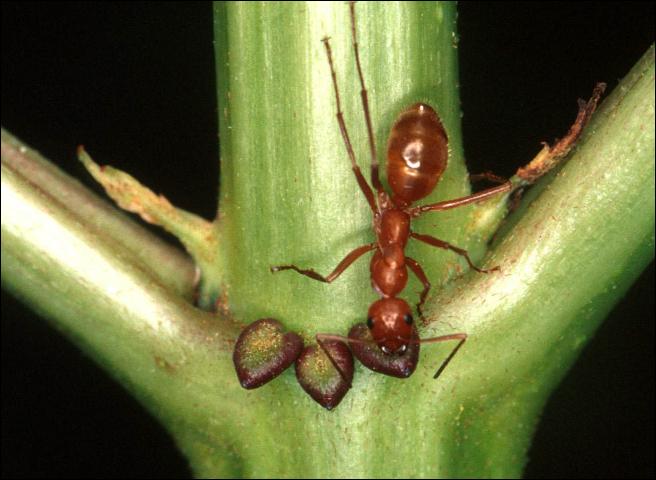
by Mark Tancig | Dec 10, 2019
The diversity of life is impressive. As gardeners, we focus on plant life, which has so much diversity that you could probably study plants all your life and still feel like there is so much more to know and discover.
Botanists attempt to classify all living plants (and extinct ones, too!) according to binomial nomenclature and have created a long list of terms to describe the myriad plant structures, shapes, textures, etc. present in the plant world. One of the many interesting structures that you may notice upon close inspection are extra-floral nectaries.
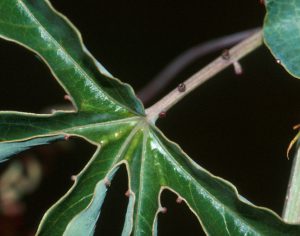
The small bumos on this passionflower leaf are extra floral nectaries. Source: UF/IFAS.
Extra-floral nectaries are nectar-producing structures that are found outside of the flower (extra-floral means out of flower like extra-terrestrial means out of earth). Most of us are familiar with nectar being produced in the flowers as part of pollination. The plant’s sweet, nutritious nectar entices pollinators to visit, sip some nectar, bump against the anthers and get pollen stuck on themselves, visit the next flower for more nectar, and transfer that pollen to another plant’s stigma. So, what would be the benefit of producing nectar in areas outside the flower? Turns out, that while the diversity of life is impressive, the relationships formed between various species are fascinating and the presence of extra-floral nectaries in certain plant species highlight such inter-relationships.
Scientists have long been interested in these structures and have found that many of the plants that form extra-floral nectaries do so to entice insects for protection from other insects. Ants are usually associated with plants that produce extra-floral nectaries and have been shown to protect the plant from herbivores that may want to munch on the plant. Some ants have been recorded spraying formic acid (the compound that causes the burn of a fire ant sting) on potential plant pests. The ants benefit by having a regular source of carbohydrate-rich nectar. Carnivorous plants, including our locally famous pitcher plants (Sarracenia spp.), use extra-floral nectaries to entice insect prey and to create a slick surface that causes its prey to fall in the pitcher. The plant-ant relationship is an example a mutualistic symbiosis (both organisms benefit) whereas the pitcher plant-insect relationship is an example of predation.
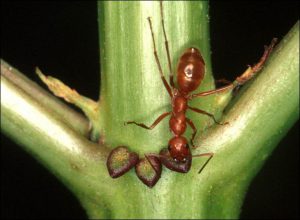
An ant visiting the extra floral nectaries on an elderberry shrub. Source: UF/IFAS.
Many familiar plants produce extra-floral nectaries, including cotton, hibiscus, passionflower, and peach. These nectar producing glands usually look like small bumps and are found along the petiole (leaf stalk), the base of leaves, at the stipules (small leaf-like structures where petiole meets stem), and sometimes near the bracts found just outside of the flower.
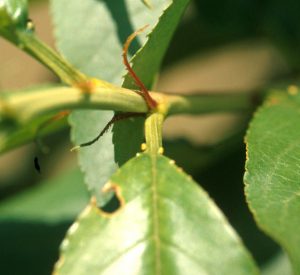
Peach trees are a common tree that contain extra floral nectaries at the base of the leaf. Source: UF/IFAS.
Next time you notice a strange bump on a leaf, a line of ants along the stem, or an insect regularly visiting leaves instead of flowers, take a closer look and you may be observing one of the many amazing examples of diversity and inter-relationships of species. To learn more about extra-floral nectaries, please see the EDIS publication Many Plants Have Extrafloral Nectaries Helpful to Beneficials. For a thorough glossary of botanical terms, visit the Missouri Botanic Garden glossary page.

by Mark Tancig | Oct 22, 2019

Food, rides, and local exhibits can be found at the 78th Annual North Florida Fair, happening November 7th to the 17th. Source: North Florida Fair.
The 78th Annual North Florida Fair is coming to Tallahassee November 7 through the 17. Many of us look forward to our annual dose of funnel cakes, cotton candy, rides, and racing pigs. Others are preparing to show off their wares. It’s a tradition that goes way, way back and provides the community a place to celebrate local artisans and farmers. The North Florida Fair, first celebrated in 1939 at the Leon County Armory (currently the Senior Center), brings the residents of 24 surrounding counties together in Tallahassee to connect and share in the culture of north Florida. If you would like to add to the richness and diversity of arts, crafts, treats, and other goods, now is the time to prepare your exhibits.
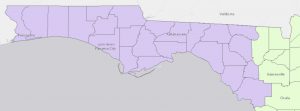
Residents of twenty-four area counties are able to enter exhibits in the North Florida Fair. Source: Mark Tancig
There are dozens of exhibitor types, or departments, split into hundreds of categories, or classes, that you can enter, and you’re not limited to entering just one. The whole family can get involved as there are separate divisions for adults and youth. Some departments even have a division just for professionals. If you’re an agricultural producer, you can show off your livestock or enter home-grown fruits and vegetables, fresh, canned, pickled, or preserved. If cooking is your thing, enter your breads, cakes, cookies, candies, and/or pies. A popular baking competition is the King Arthur Flour Baking Contest and this year’s recipe to make is their Easy Whole Grain Pumpkin-Banana Bread. Fermenters can also enter their favorite wines, ales, and liqueur concoctions. For the artists, there is a wide range of classes to choose from, including painting, drawing, photography, and sculpture. Craftsmen and craftswomen that create jewelry, glass mosaics, pottery, or woodworks have a separate class. All you gardeners have the chance to show off your prized perennial plant, indoor potted plant, succulent, and more in the Capital City Garden Club’s Flower Show.
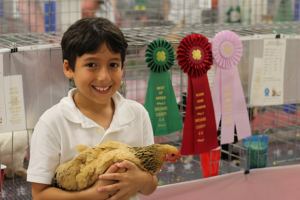
Youth and adults can enter a variety of exhibits, from livestock to sculpture, at the 78th Annual North Florida Fair. Source: UF/IFAS, Aly Donovan.
In addition to the pride that comes along with being a blue-ribbon award winner, there are prize awards for all class entries. Most are quite modest ($3) but can get into the $100 range. And remember, you can enter multiple classes!
Most exhibits are due just before the fair begins or during the first week, depending on the category, and, in general, they can be any item created during the last year or not previously entered. The North Florida Fair website (http://northfloridafair.com/) contains all the details for each exhibit department, including rules, arrival times, scoring criteria, and any special rules.
If you don’t enter an exhibit, you can still come and enjoy the rides, people-watching, and fair food, but please stop in and visit the exhibit buildings. Not only is it a nice diversion from the jester wanting to guess your weight or a much-needed break from the gut-wrenching rides, it’s a chance to appreciate the work, skill, and creativity of all the local youth and adults who created a best-in-show piece of artwork or raised a blue-ribbon chicken.
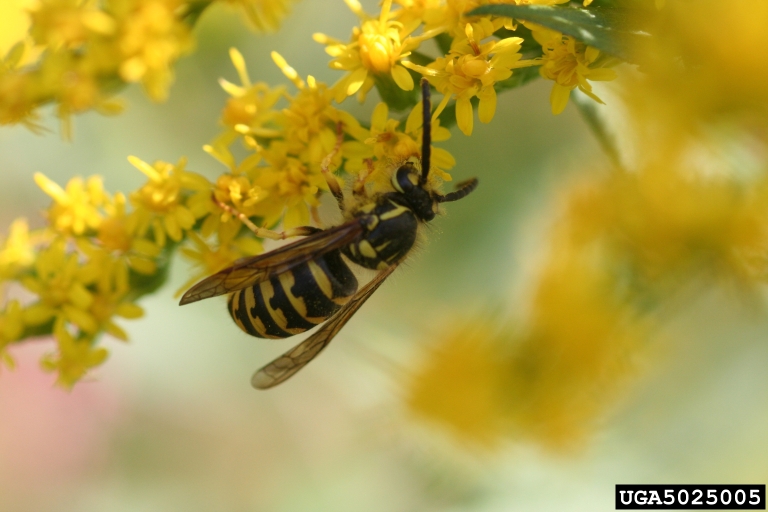
by Mark Tancig | Sep 16, 2019
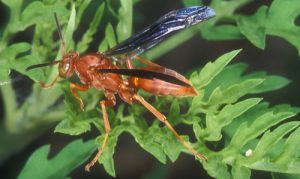
Paper wasps can hide among vegetation and surprise gardeners. Credit: UF/IFAS
As summer comes to a close, many gardeners are getting their landscapes back in shape after the long, hot summer months. There are likely some large weeds and/or vines that have taken over areas where they are not wanted. As you begin to hack these back, it is wise to be on the lookout for wasps and yellow jackets. These stinging insects pack a punch and are particularly active this time of year.
Wasps and yellow jackets are closely related in the insect family Vespidae. These are social insects, similar to ants and bees, that have a division of labor with a queen and workers (both female) carrying out specific tasks for the colony. Males arise from unfertilized eggs and are only needed for reproductive purposes. Once they mate with a female from another nest, they die. Once the fertilized females emerge in late fall, they will overwinter under the bark of a log, or other safe habitat, until spring, when they start a new colony. Unlike bees, who die after a single sting, wasps, yellowjackets, and hornets can sting multiple times. Yellowjackets and hornets even emit an alarm pheromone that causes other members of the nest to aggressively defend the colony.
While there are many different species of wasp in Florida, including the paper, red, mason, potter, and mud dauber wasps, the paper and red wasps (Polistes spp.) are the ones that tend to be most aggressive when provoked and cause a harmful sting. Their nests are often found under house eaves or hidden in amongst shrubbery. These nests hidden in vegetation are the ones that gardeners typically run into when trimming or weeding.
There are three species of yellowjacket in Florida, including the eastern yellowjacket (Vespula maculifrons), southern yellowjacket (Vespula squamosa), and baldfaced hornet (Dolichovespula maculata). All three can be aggressive and sting humans, especially if they feel threatened, such as when pruning or working over or near a colony. Yellowjackets build extensive colonies underground, though can also build colonies in hay, palm fronds, and other loose debris aboveground. These underground colonies usually have a single entrance but can also have multiple entrance holes. Hornets build aerial colonies. Gardeners are most likely to have run-ins with yellowjackets since hornet nests are typically up in trees and more obvious than an underground yellowjacket colony.
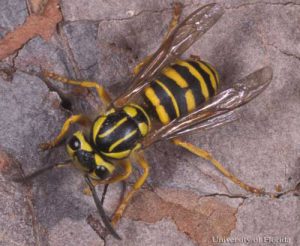
Southern yellowjackets create underground colonies that can hold over 2,000 yellowjackets. Credit: UF/IFAS
While these insects can be a major pain, figuratively and literally, they actually do help out us gardeners. The main food source of wasps, yellowjackets, and hornets are caterpillars and beetle larvae, which are often garden pests. They are also native pollinators. Therefore, it’s best that we accept some in the landscape, manage colonies in high-traffic areas, and prevent encounters with them. To reduce your chance of weeding right into a wasp nest, take a stick and knock around the vegetation to see if any are hiding in the brush before getting started. Be ready to run. Yellowjackets are harder to avoid as they are stealthy in their underground bunkers.
When it comes time to remove these insects from near a structure or heavily trafficked area, you may want to consider hiring a professional pest control company. Wasps can be managed by most homeowners with a broom (if the nest is small and/or relatively inactive) or aerosol insecticides specifically formulated for wasp control. Yellowjackets and hornets are trickier to deal with and should be approached very cautiously. Spraying aerosols into a yellowjacket entrance hole is dangerous and may not be very effective as some colonies can be up to a foot wide and contain over 2,000 yellowjackets. Any attempts to control wasps, yellowjackets, and hornets should be done in the evening when they are less active and with appropriate clothing that covers the skin.
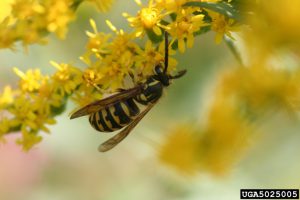
Yellowjackets are pollinators and eat caterpillar pests! Credit: Whitney Crenshaw, Colorado State University, Bugwood.org
For more information on wasps, yellowjackets, hornets, and other stinging insects, see the Biting and Stinging Insects section of the UF/IFAS EDIS site (https://edis.ifas.ufl.edu/topic_biting_and_stinging_pests) or contact your local Extension Office.



















